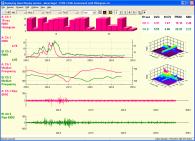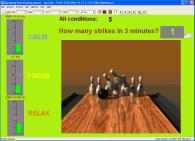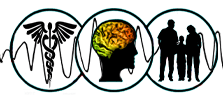My son started neurofeedback at the age of 8. He was overly hyper and had huge problems making friends at school, as well as staying still during the class. After about 5 weeks of 3 sessions per week of neurofeedback, his behaviour drastically changed positively. After total of 40 sessions he was a brand new kid. My friends couldn’t recognize him anymore. My son started making more friends and his grades improved significantly.” Margarita
An article in the New York Times in October, 2010 touts the benefits of Neurofeedback for persons with ADD. https://www.youtube.com/watch?time_continue=9&v=HxHR7InSQ1c Listen to an NPR story, “Train the Brain: Using Neurofeedback to Train the Brain”, November 1, 2010.
Brainwave biofeedback, or neurofeedback, is a specialized field of biofeedback therapy with almost 40 years of research and clinical application. Neurofeedback has been utilized to successfully treat children with certain learning disabilities, ADD, as well as those who exhibit specific developmental disorders in areas such as reading writing, and spelling. More specifically, EEG (electoencephalogram) electrodes are used to measure brainwave activity from the sensorimotor cortex of the brain. The child beas been positive outcomes in research and clinical studies showing Neurofeedback to be effective with Autism.
 This is an example of the technical screen that the therapist uses when working with the patient. The patient watches a game screen while the therapist can make adjustments to make the game harder to make points, thereby exercising neurons to help with paying attention or otherwise bettering self-regulation.
This is an example of the technical screen that the therapist uses when working with the patient. The patient watches a game screen while the therapist can make adjustments to make the game harder to make points, thereby exercising neurons to help with paying attention or otherwise bettering self-regulation.
 This is an example of a gaming screen that the patient uses. When criteria for desired frequencies are met, the game scores points.
This is an example of a gaming screen that the patient uses. When criteria for desired frequencies are met, the game scores points.
With neurofeedback, some children may learn to increase the’stimulation of these sensorimotor neurons, thus facilitating more brain wave activity. Learning to increase amplitude (power) in the 12-32 Hertz (beta, a fast frequency) range while learning to decrease 4-8 Hertz (theta, a slow frequency) are the primary objectives. Once these neurons begin to work properly and network together, they generally will be that way throughout the life of the child and into old age.
On Saturday May 16, 1998, National Public Radio’s Weekend Edition did a story of Neurofeedback in a Yonkers, New York school district which is using Neurofeedback for its ADD students. You can hear that broadcast by using Real Audio and retrieving it from https://www.npr.org/ramfiles/980516.wesat.09.ram
“I have used and recommended neurofeedback for many years. I believe it can be helpful in brain recovery and to help improve symptoms of ADHD, depression, anxiety and learning problems.” Daniel Amen, MD Amen Clinics, Inc.  Click on this picture to see an article and video which explains how Neurofeedback)is used by the U.S. Veterans Health Administration to treat Veterans with PTSD and TBI (Traumatic Brain Injury) after their return from service in Afganistan and Iraq, https://www.prweb.com/releases/
Click on this picture to see an article and video which explains how Neurofeedback)is used by the U.S. Veterans Health Administration to treat Veterans with PTSD and TBI (Traumatic Brain Injury) after their return from service in Afganistan and Iraq, https://www.prweb.com/releases/
Historical Literature Review of EEG Biofeedback (Neurofeedback)
In the early 1970s, researchers proposed several theories and protocols for using neurofeedback as an assessment and treatment approach for ADHD children. In 1973, Satterfield proposed a “low-arousal “hypothesis of hyperkinetic children, finding that under-arousal corresponded to decreased beta amplitudes. Lubar & Seifert (1975) published the first article dealing with the reduction in seizure activity by using neurofeedback training. 1976, Lubar & Bahler published a series of case studies showing the effectiveness of SMR training in reducing seizures, replicating Sterman’s (1973) findings. These seizure patients also experienced increased attentiveness in school. The findings led to anther case study by Shouse and Lubar (1976) to determine the effectiveness of neurofeedback training using SMR (sensorimotor rhythm) and helping an ADHD child. This blind crossover study provided the first clear evidence that neurofeedback training, utilizing SMR with theta inhibition, was an effective way for working with an ADHD child. In 1976, Lubar began treating ADHD children using neurofeedback. He found that children with attention and reading difficulties, but not with hyperactivity problems, produced excessive theta activity and deficit beta production. In 1985, Lubar, Bianchini, Calhoun, & Lambert >provided a strong rationale involving theta suppression. More extensive studies were published following this study, employing more children (e.g., Janzen, Graap, Stephanson, Marshall, & Fitzsimmons, 1995; Linden, Habib, & Radojevic, 1996; Lubar 1977, Lubar, 1991; Lubar & Lubar, 1984; Shouse andLubar, 1978, 1979, Lubar and Lubar, 1984, Lubar, Swartwood; Swartwood, &O’Donnell, 1995; Othmer, Kraiser, & Othmer, 1995; Tansey & Bruner, 1983,Tansey, 1984, 1985, 1990). From 1986 to 1991, topographic brain mapping studies further clarified the difference in EEG’s between ADHD and matched controls. In 1990, Mann, Lubar & Zimmerman, Miller, & Muenchen found that theta activity was obtained in many locations (frontal and central) and decreased beta activity was found in many frontal and temporal locations. These findings demonstrated that ADHD (with hyperactivity) formed a neurologicallydistinct group from controls. Furthermore, PET scans found decreased glucose metabolism in areas of the brain involved in motor activity and attention in ADHD (hyperactive) versus normal controls (Zametkin, 1986 & Zametkin et al., 1990). Later, using SPECT (single photon emission computedtomography) Sieg, Gaffney, & Preston (1995) found brain imaging abnormalities in ADHD. Using PET and SPECT these researchers also demonstrated that ADHD children exhibit a maturational delay in the systems affected by. Mann, Lubar, Zimmerman, et al. (1992) found that the comparison between the brain mapping of ADHD and non-ADHD boys revealed increased theta production and decreased beta production in ADHD boys. In addition, the distribution of EEG >frequency for the ADHD boys corresponded to brain activity characteristic to younger children. Rossiter and LaVaque (1995) compared the effectiveness of neurofeedback to stimulant medication in reducing ADHD symptoms. Their results indicated that neurofeedback is a viable alternative to the use of stimulant medication. Other more recent studies (Linden, Habib, & Radojevic, 1996; Lubar, Swartwood, Swartwood, & O’Donnell, 1995) continue to provide evidence for the effectiveness of neurofeedback training for ADHD children.
The above section written by Alexander Minevich, M.A. Ontario Institute for Studies in Education (University of Toronto)
Other applications of Neurofeedback include Substance Abuse Disorders, Depression, Chronic Fatigue Syndrome, Siezure Disorders, Peak Performance Training and Fibromyalgia and are referenced below or have downloadable articles at the International Society for Neurofeedback and Research.
Most health plans do not cover Biofeedback or Neurofeedback. Despite holding certification since 1985 by the Biofeedback Certification International Alliance, Blue Cross will not allow me to do Biofeedback or Neurofeedback with their enrollees or even see their enrollees should they desire to pay me directly for my services. By means of their non-negotiable contract, I am directed to tell their enrollees to contact them for a PhD level provider who practices biofeedback. Please make sure that any practitioner you choose maintains Continuing Education Units and is certified by BCIA.
